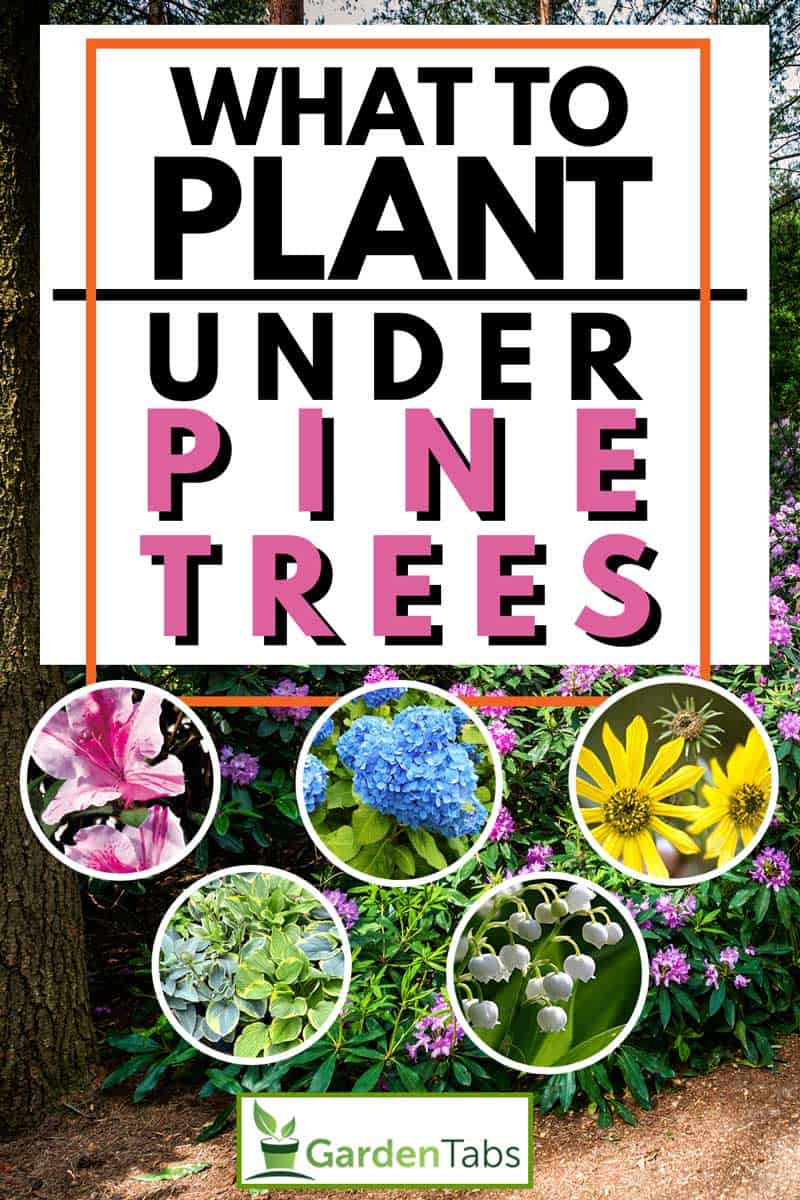 If you have pine trees, you may be wondering which plants will thrive when grown beneath them. Pine trees, also known as "evergreens" due to the unchanging color of their needles, are a popular and beautiful addition to any yard. Their beauty can be significantly enhanced if you know the right plants to pair with them, so that's why we've gathered all the necessary information for making a great choice right here in this article.
If you have pine trees, you may be wondering which plants will thrive when grown beneath them. Pine trees, also known as "evergreens" due to the unchanging color of their needles, are a popular and beautiful addition to any yard. Their beauty can be significantly enhanced if you know the right plants to pair with them, so that's why we've gathered all the necessary information for making a great choice right here in this article.- Hosta
- Jacob's ladder
- Azalea
- Ferns
- Lily of the valley
- Woodland sunflower
- Wild geranium
Although this list of plants is a great starting point, there are ways to make the soil around pine trees more hospitable to other plants as well. You'll have to be cautious, however, as you don't want to raise the pH level so much that the pine trees themselves suffer. But have no fear - we'll cover this topic and more in this article. So, let's get started!
What Plants Grow Well Under Pine Trees
When looking for plants to grow under your pine trees, you'll want to keep your eyes open for three things:
Plants That Do Well in Acidic Soil
Even though the soil can be neutralized, pine trees love acidic soil, so it's essential not to neutralize it so much that it becomes alkaline. Plants in this category include azaleas, rhododendron, camellias, daffodils, and hydrangea.
Plants That Prefer Shade
Pine trees tend to have lots of branches with densely-packed needles that create lots of shade, so it's important to find plants that don't need a lot of sunshine. Plants in this category include coral bells, foxglove, Japanese forest grass, and primrose.
Plants That Don't Need a Lot of Water
Any plant that grows beneath a pine tree will need to compete with it for water, so it will make things a lot easier if it's a plant that doesn't need much in the first place. Either way, you'll still have to water the plant more than you would if it was planted somewhere else. Plants in this category include orange daylily, blue spire, milfoil, bloody geranium, and red valerian.
If the plant in question meets any of these three criteria, it's a great candidate! Just make sure that your shade-loving plant also does well in acidic or neutral soil, or that your drought-resistant plant can also handle lots of shade, and so on.
What Perennials Grow Under Pine Trees?
To help you get started in your search, we've assembled a list of a few of the best perennials to grow under pine trees. For more insight into the best times to plant your perennials based on your climate zone, check out our article When to Plant Perennials (By Zone and State).
Rhododendron
Rhododendrons come in over a thousand varieties but are generally shrubs or trees with magenta, funnel-shaped flowers. We'll discuss this popular plant in more detail below.
Azalea
Azaleas are classified as a type of rhododendron but are typically much smaller and only grow as shrubs. They have pink flowers that are sometimes fragrant and prefer partial shade.
Click here to buy an azalea on Amazon.
Hosta
Hostas, also known as plantain lilies or giboshi, are a hardy, leafy perennial that is highly tolerant of shade. They require very little maintenance, spread easily, and are easy to transplant.
Click here to buy hostas on Amazon.
Ferns
Commonly found in dimly-lit forests, ferns are graceful perennial plants without flowers or seeds. Ferns can grow in partial sunlight, but they thrive the most in shady conditions.
Click here to buy a fern on Amazon.
Jacob's Ladder
Jacob's Ladder is a type of perennial herb with lavender or white flowers. They prefer shady environments, but keep in mind that they also like moisture. You can use some of the tips we recommend for rhododendrons later in this article to make sure they're retaining enough water.
Click here to buy Jacob's Ladder on Amazon.
Foxglove
Foxgloves grow in tall spires covered in long, tapered blossoms. They are perennials in some climates and prefer protection from the sun.
Click here to buy foxglove seeds on Amazon.
Lily of the Valley
These delicate plants have bell-shaped flowers dangling from arching stems. They do well in dry shade, making them the perfect companion for pine trees.
Click here to buy lily of the valley roots on Amazon.
Orange Daylily
Orange daylilies will grow almost anywhere with minimal care. Plus, as a bonus, nearly every part of the plant is edible!
Click here to buy orange daylily bulbs on Amazon.
Wild Geranium
Wild geranium is a low-growing, perennial springtime plant with delicate lavender and pink flowers. They grow well in partial shade and moisture, so use our tips for rhododendrons to make sure they have enough.
Click here to buy wild geranium seeds on Amazon.
Woodland Sunflower
Woodland sunflower is a perennial herb with spiky yellow flowers. They do well in dry environments and are easy to grow in partial shade.
Click here to buy woodland sunflower tubers on Amazon.
Hydrangea
Hydrangeas are native to Eastern Asia and have clusters of blue, pink, purple, or green flowers growing on a medium-sized bush. Although they require full to partial sun, other qualities that we discuss in detail later in this article make them an excellent choice to pair with pine trees.
Will Rhododendrons Grow Under Pine Trees?
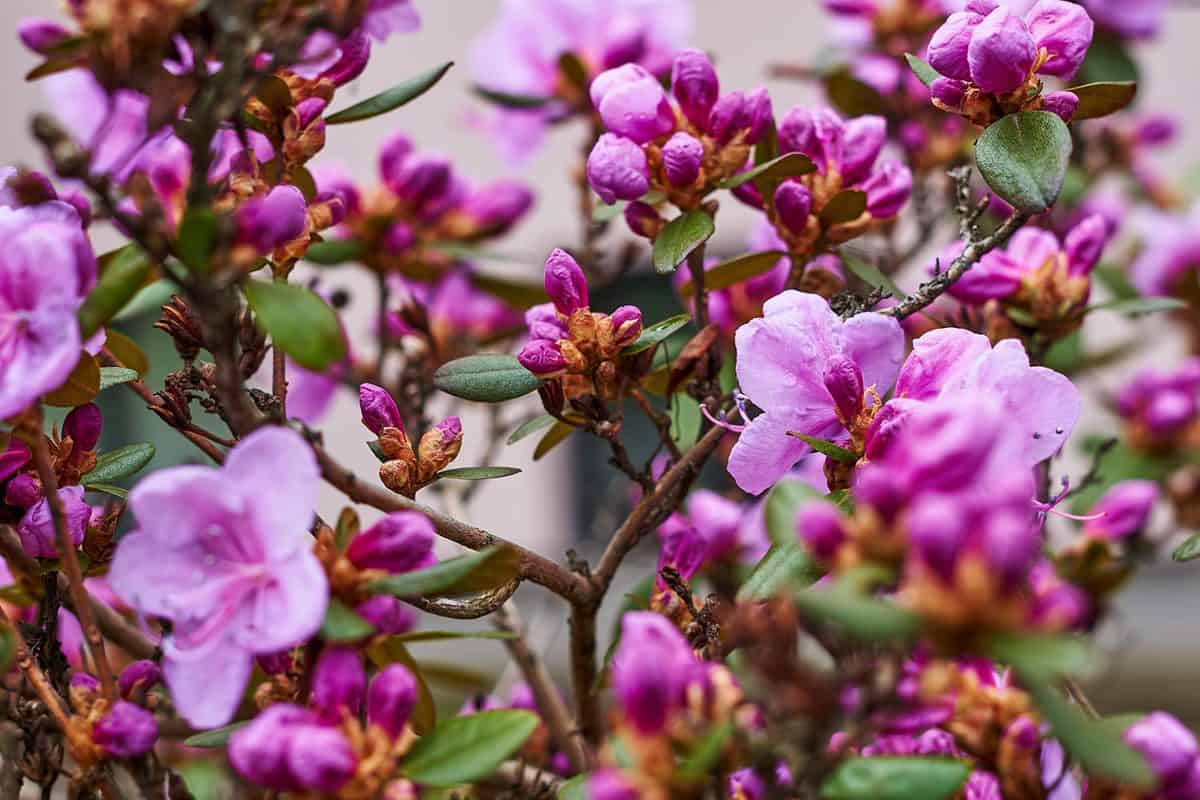
Rhododendrons are shrubs or small trees with fluffy, funnel-shaped flowers, usually magenta, amongst large, thick leaves. They are also a fantastic choice to plant under pine trees since they thrive in acidic soil and need a soil pH level between 5.0 and 5.5 to survive. Many varieties also love shade or partial sunlight, reinforcing them as a great way to add some color to the yard space under your pine trees.
However, as is the case with most plants under pine trees, you'll need to water your rhododendrons more frequently than if they were grown anywhere else. This plant, in particular, loves moist soil, so you'll want to monitor its water intake closely. It's a good idea to add a moisture-rich mulch like peat moss to prevent their roots from drying out and to add compost regularly.
Click here to buy a rhododendron plant on Amazon.
Click here to buy peat moss on Amazon.
Can You Plant Hydrangeas Under Pine Trees?

Hydrangeas can thrive under pine trees but need special conditions. Since they require full to partial sun, it's essential to plant them under a pine tree with widely-spaced branches that allow sunlight to reach the ground.
Hydrangeas do better under pine trees than many other shrubs because their roots are close to the surface of the ground, making it easier for them to get the necessary nutrients. They'll still need some help, though, including planting them on a slight mound of dirt, watering regularly, and fertilizing a few times per season with a 5-7-2 fertilizer.
An interesting fact is that the flowers of bigleaf hydrangeas change color depending on the pH level of the soil. This means that if you plant this variety of hydrangea in the acidic soil under a pine tree, you'll end up with blue flowers.
Click here to buy hydrangea seeds on Amazon.
Can Peonies Grow Under Pine Trees?
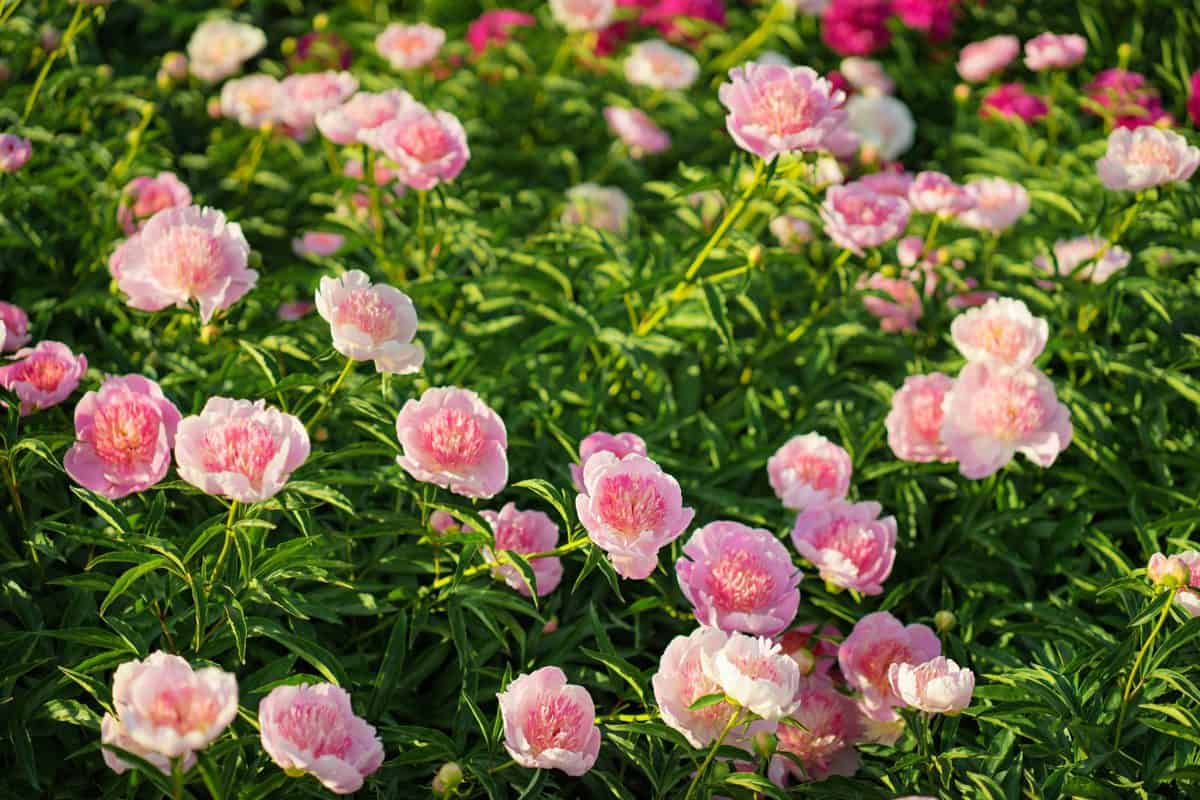
Peonies are not a good choice for planting under pine trees, as they need full sun, and do not like acidic soil. They do not like to share resources, so do best when planted away from trees or taller shrubs, including pine trees.
Will Day Lilies Grow Under Pine Trees?
Day Lilies will grow well under pine trees, although they may not bloom to their full potential. For optimum blooms, they need at least six hours of full sun per day. Otherwise, they are a very good choice to fill the space beneath a pine. They can grow in most types of soil, and the deep roots of the tree will not compete with the plants for moisture and nutrients.
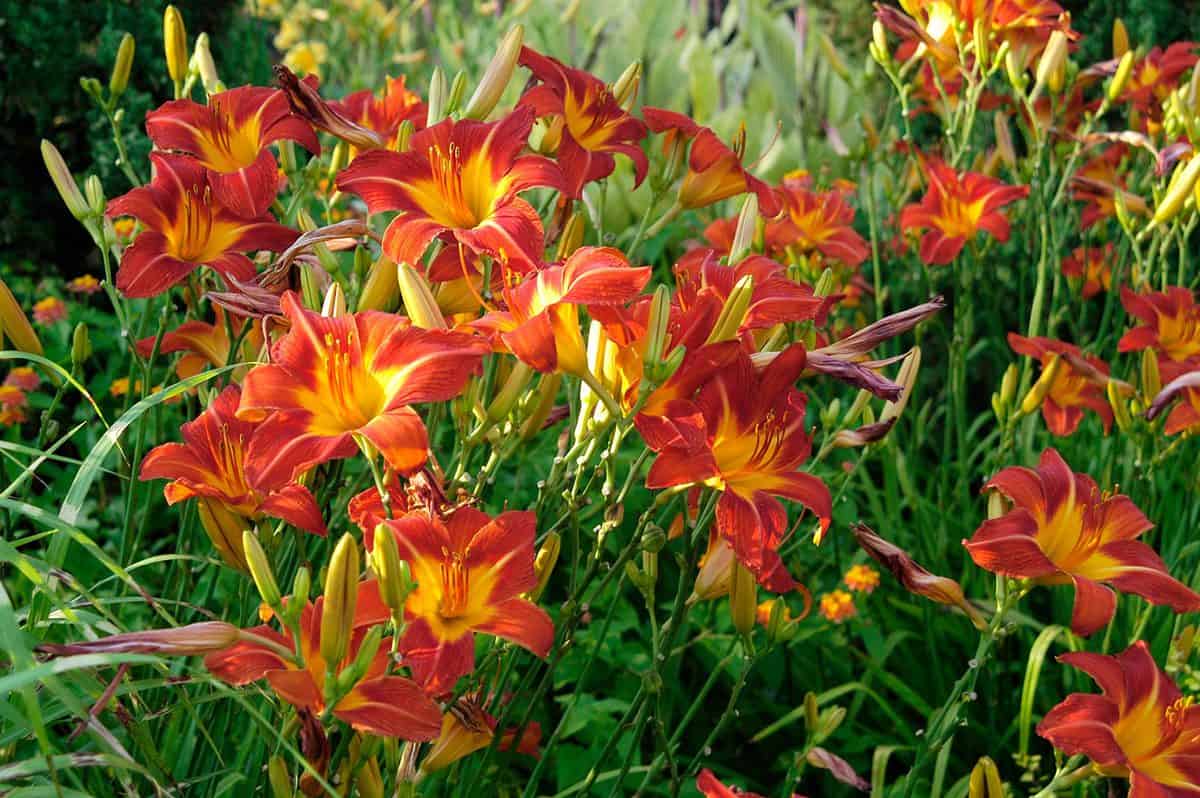
Click here to did these adaptable flowers on Amazon.
Privacy Shrubs Under Pine Trees
Looking for a solution to privacy issues? If your towering pine is beautiful but does not block your neighbor's view, you have a few options that will thrive in the acidic soil beneath your tree.
Azaleas, Rhododendrons, and Witch Alders all will do well under a pine, as they prefer the dappled sunlight and acidic soil.
There are a variety of evergreens that will do well, also, including yews and arborvitae.
Click here to see this yew shrub on Amazon.
Can You Plant Grass Under Pine Trees?
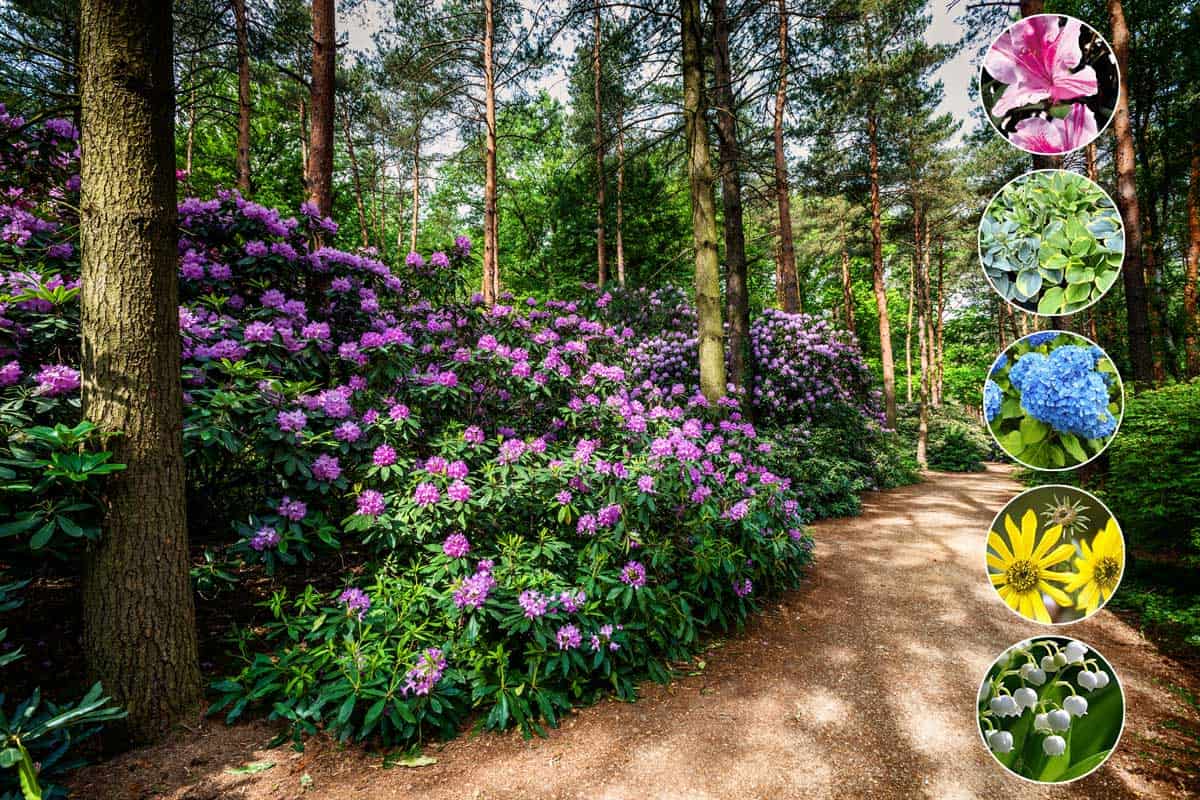
The short answer is yes, you can, but you need to take certain precautions. Since shedding pine needles create a thick covering on the ground, you'll need to clear it periodically, so it doesn't suffocate the grass that is trying to grow. You'll also need to balance the acidity of the soil with lime, and this process usually needs to be repeated over several years. It's also a good idea to remove any low-hanging or dead branches to increase the amount of sunlight. Finally, you'll need to water the grass more frequently to offset the pine tree's high demand for water.
Look for a type of grass that doesn't require as much sun or water, such as fescue. You could also select an ornamental grass to provide some visual interest. Check out our article 15 Best Ornamental Grasses That Grow in Shade to get some ideas.
Click here to buy fescue seeds on Amazon.
Do Pine Trees Make Soil Acidic or Alkaline?
It is a myth that fallen pine needles make the soil acidic, although it is true that the needles are acidic. However, they lose their acidity as they dry, so by the time they decompose and become one with the soil, it is impossible for them to change the soil composition noticeably. This means that you can plant pine trees or use pine needles as mulch without worrying that they will significantly change the pH levels of the soil.
This myth came about because pine trees do best in acidic soil, which is why other plants sometimes struggle to grow beneath them. The trees themselves, however, don't have anything to do with the pH levels of the soil - they're more likely to grow and thrive in favorable conditions.
Should Dead Pine Needles Be Removed?
The answer to this question depends on your plants for the soil beneath your pine trees. If you'd like to add flowers or shrubs, it's a good idea to remove the pine needles since they can suffocate a young plant. You can save the raked up needles and either add them to your compost heap or let them dry thoroughly and use them as mulch.
However, if you'd like to grow grass beneath your pine trees, removing the fallen needles is a good idea. Even though the acidity of the needles doesn't have any effect on the pH levels of the soil, growing grass can become suffocated under too many pine needles. They can also block sunlight and water from reaching your grass.
Click here to buy a rake on Amazon.
How Do You Neutralize Soil Under Pine Trees?
Before altering the pH level of your soil, have a sample professionally tested. They will be able to tell you how far you can safely adjust the acidity of the soil without harming the pine tree itself.
Adding lime is one of the most popular ways to neutralize acidic soil. To make this happen, you'll need to add enough lime - usually made from calcium carbonate or limestone - to the soil to pass its "buffer pH." The soil can maintain its pH level despite the addition of lime, but only up to a certain point, which is called its buffer pH. When you've successfully passed the buffer pH, the soil will start to become more alkaline.
Follow These Simple Steps to Neutralize Your Soil
- Thoroughly rake away all of the fallen pine needles.
- Use an aerator set at 1" to 1 1/2", being careful not to damage the roots. You should use the aerator in the entire area you want to neutralize.
- After the area is wholly aerated, add lime with a lime spreader.
- You may need to repeat this process the following spring, as it sometimes takes a couple of years for the pH levels to balance.
Click here to buy lime for your soil on Amazon.
Click here to buy an aerator on Amazon.
Read more:


















